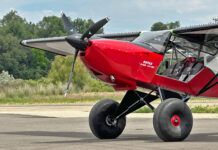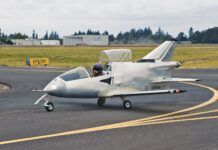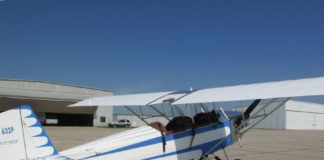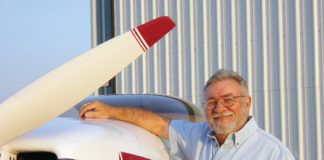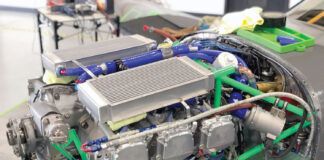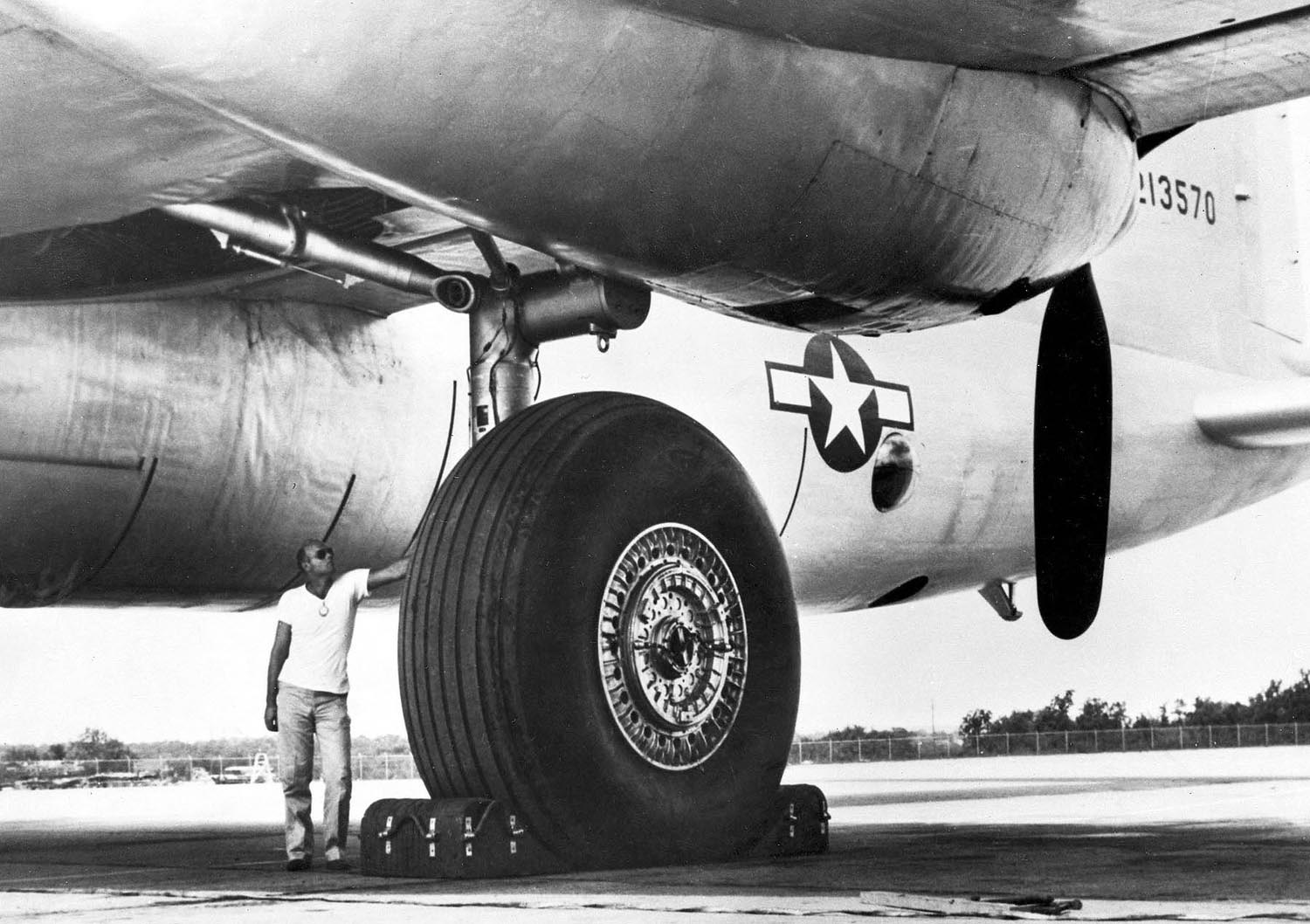
Once the basic configuration of the airplane has been established, and we have a properly sized design that balances and has viable load paths, it’s time to turn our attention to the next major component of the airplane—the landing gear.
It is relatively common for inexperienced designers to leave the design and integration of landing gear until late in the design process. For most of the early part of the layout of the airplane, it’s common to see the landing gear represented (if at all) on the drawings as just circles on the side view touching a ground line, or as simple “lollipops” where the gear legs are represented by single lines connecting the wheel to the airplane.
This is a mistake because the integration of the landing gear has very significant effects on the rest of the airplane. Leaving the gear integration until late can often lead to large amounts of redesign as these effects assert themselves.
The landing gear (or, as the British call it, “the undercarriage”) supports the airplane while it is on the ground. The airplane rolls on its wheels when it is moving on the ground. On a typical flight, this starts with a taxi to the runway. The pilot must have sufficient control of the airplane as a ground vehicle to steer it along the taxiways and position it for takeoff.
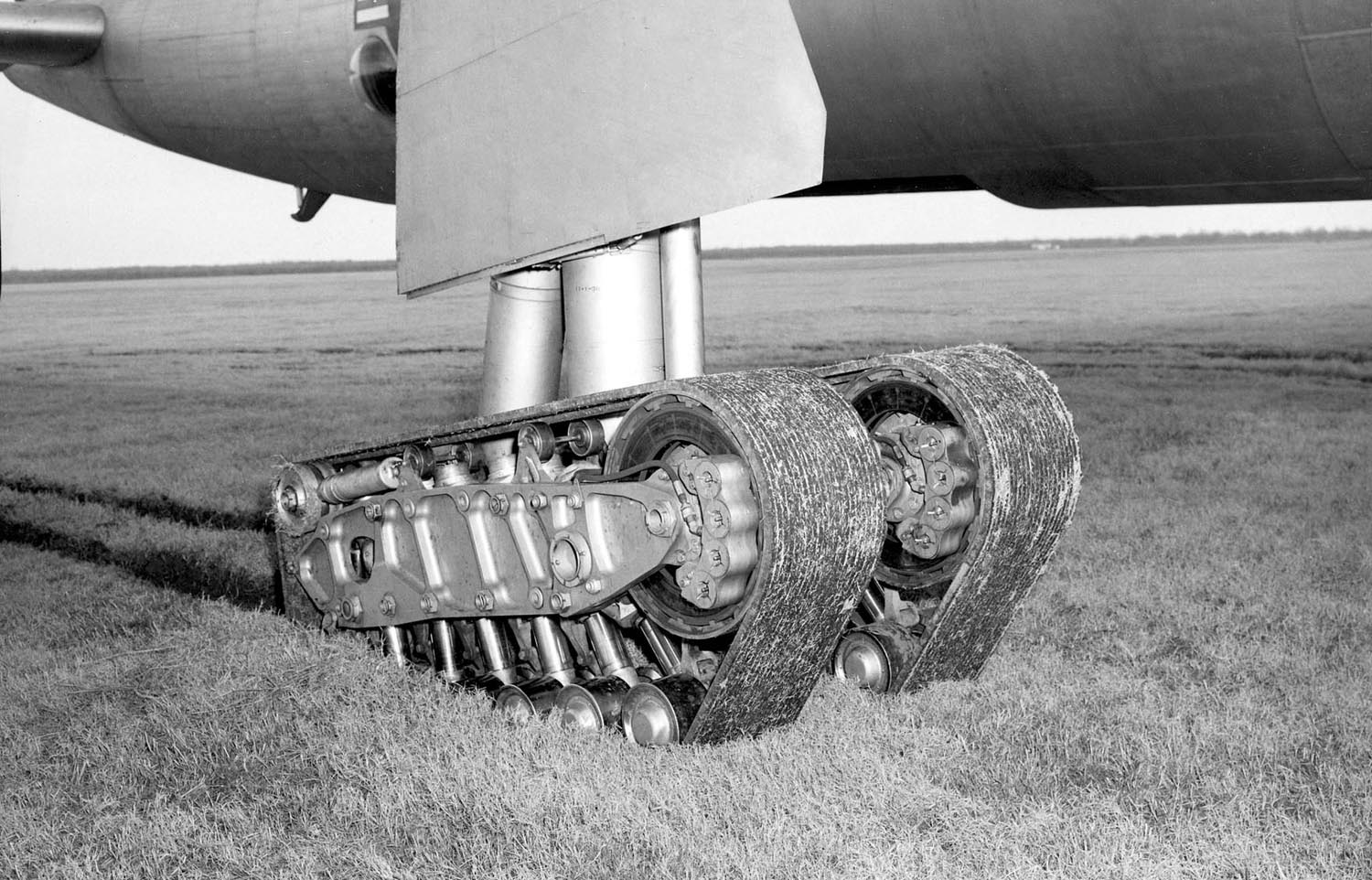
During the takeoff roll, the airplane accelerates down the runway, carried primarily by the wheels, until it reaches liftoff speed. At this point, the pilot will use the elevators to rotate the airplane nose-up to an angle of attack where the wing generates enough lift for the airplane to leave the ground. The balance of the airplane on the landing gear must allow this takeoff rotation to happen with a small enough elevator deflection that the airplane is well trimmed for flight as it lifts off.
The loads on the landing gear during taxi and takeoff are relatively low. The gear must support the weight of the airplane and handle fore and aft loads imposed by braking and hitting bumps in the surface. On smooth runways these loads are low. For unimproved or unpaved surfaces, the loads imposed by bumps can be larger. Side loads are also relatively modest. Because airplanes taxi slowly, cornering loads on the gear are small. During the takeoff roll, the airplane should be going straight, so side loads on the gear will only result from small steering inputs to stay straight or from crosswinds.
In a landing, the airplane descends to the runway until the landing gear touches the ground. While it is theoretically possible to do a perfect flare that brings the sink rate to zero just at the moment the wheels touch down, every pilot knows that this is not what happens in real life. Even in operations where the pilot is striving for a gentle touchdown, variations in pilot technique and gusts can cause the airplane to touch down with a non-zero sink rate.
In some types of operations, touching down with a significant sink rate is deliberate and desirable. The flare maneuver in a “standard” landing makes the total obstacle-clearance landing distance longer and also increases the variability of the touchdown point. In operations where short landing distance and/or precise touchdown point positioning are needed, the landing flare is either eliminated or minimized. The airplane is deliberately flown so that it touches down with a significant sink rate, and the landing gear must be designed to absorb the sink and withstand the impact loads.
The best-known example of this is landing on an aircraft carrier. It is critically important in carrier operations to touch down precisely so the tailhook can catch an arresting wire. There is no tolerance for any “float” in the final moments of the approach. Carrier-based airplanes fly no-flare approaches that aim the flight path at the desired touchdown point during the stabilized approach and continue that stabilized approach condition to touchdown. The airplane hits the deck with the same sink rate it has on short final.
The same idea applies to short-field or STOL landings for land-based airplanes. The best way to minimize landing distance over an obstacle is to fly a steep final approach and touch down “firmly.”
The landing gear experiences its highest loads during landing. These are the loads that will size the gear and the structure of the airplane that it attaches to.
The highest loads on the gear will be the vertical loads that come from absorbing the sink rate on touchdown. The gear must arrest the sink rate of the airplane over the stroke of the gear and its tire. The exact loading depends on the details of the airplane and its gear design. FAR Part 23 standards state that the design limit load factor for landing gear must never be less than 2.0 (with a 1.5 factor of safety). The gear must also be able to withstand significant fore and aft loads and side loads.
When the airplane touches down, the wheels are not turning. They must spin up to match the speed of the runway surface (as seen from the airplane). During this spin-up, there is an aft force on the wheels as the inertia of the wheel opposes the spin-up.
After touchdown, the pilot will apply brakes to slow the airplane. The retarding force of the braked wheels must be reacted by the landing gear legs and the structure they are attached to. The gear design should anticipate the possibility of a touchdown with brakes already applied. Braking loads can exceed 1 G aft in extreme conditions.
Side loads must also be taken into account. While all pilots strive for a smooth touchdown with the nose of the airplane aimed parallel to the direction of travel, this is not always the case, particularly in crosswinds. The landing gear must be able to withstand the side loads imposed by a crabbed touchdown or by high-speed turns on the ground. The latter is not desirable but sometimes happens involuntarily (Ground loop, anyone?) or at the end of a too-fast landing in an attempt to turn onto a taxiway before the rapidly approaching far runway threshold. The airplane should be able to corner on the ground at the limits of tire adhesion without folding the gear.
Side loads can be particularly troublesome to design because they produce large bending moments at the attach point at the top of the landing gear leg. While the touchdown vertical loads are higher, they are more parallel to the gear leg, so they often impose less load on the gear attach structure than side loads. This is easy to overlook and can lead to a gear that is fine for normal landings, but will fail relatively easily under side loading in a bad crosswind landing.
Finally, the landing gear design must take into account the possibility of an asymmetric touchdown where one main gear wheel touches down before the other. This is relatively common, particularly in crosswind landings, where some pilots prefer to hold a slip into the wind all the way to the runway and touch down in a wing-down attitude, rather than attempting a kick out to a wings-level landing.
At this point in the design, it is not yet time to do detailed landing gear design, but it is important for the designer to have a good idea of the loads the landing gear must withstand and will transmit to the rest of the airplane in order to integrate the gear and its attach structure properly.
Detailed equations for calculating ground loads can be found in Section 5.8 of the ASTM Standard for Light Sport Airplanes and in FAR 23 standards for light airplanes.
Next month we will consider how the landing gear integrates into the overall configuration of the airplane.







